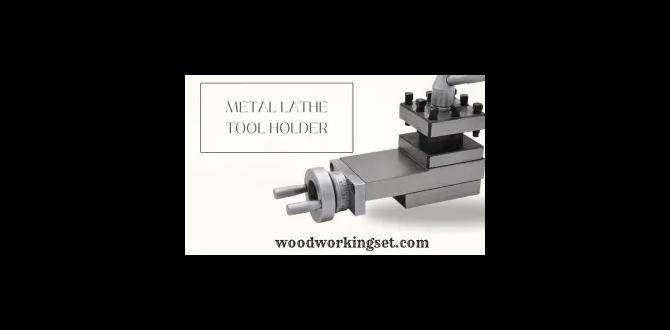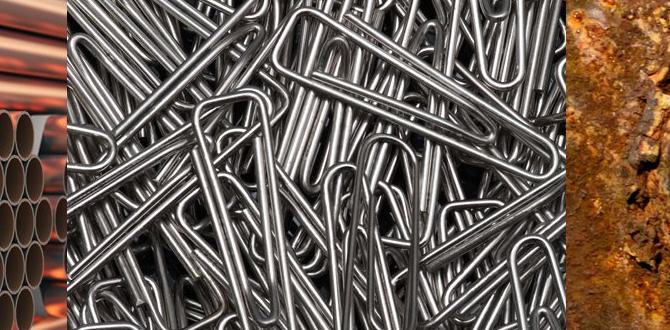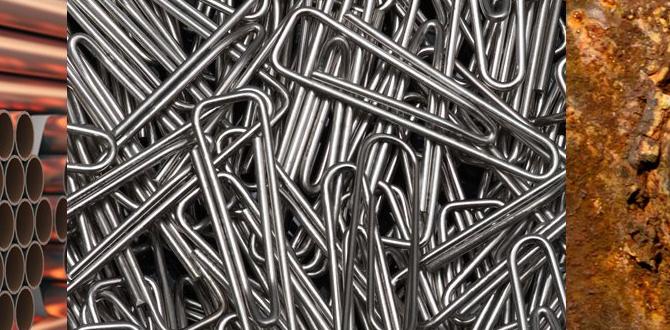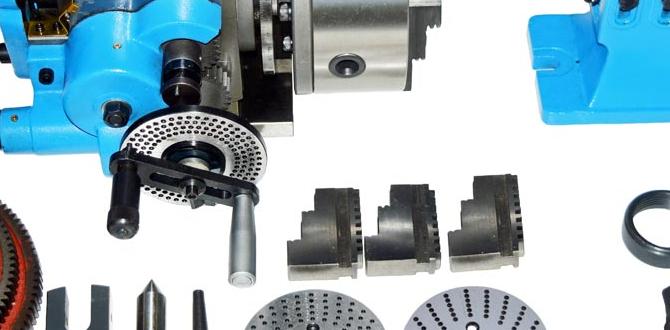Carbide end mills are fantastic tools for achieving a mirror finish on materials like PEEK, giving your projects a professional, polished look. This guide shows you how to use them effectively.
Getting that super-smooth, almost reflective finish on PEEK plastic—what we machinists call a “mirror finish”—can sometimes feel like magic. It’s a common goal for many DIY makers and aspiring machinists, especially when working with advanced plastics like PEEK. A rough finish can make even the most precise part look amateur. But don’t worry! With the right tools and a few simple techniques, you can achieve that brilliant sheen. We’ll walk you through everything you need to know about using carbide end mills to get that genius peek mirror finish, step-by-step. Get ready to make your projects shine!
What Exactly is a Mirror Finish on PEEK?
A mirror finish on PEEK (polyetheretherketone) means the surface is so smooth and reflective that it looks like a mirror. You can see a clear reflection of yourself or surrounding objects in it. This isn’t just about looking pretty; it often means the surface has very low friction, can be easier to clean, and offers improved resistance to wear and chemical attack. For many applications, especially in industries like medical, aerospace, or high-performance automotive, this level of surface finish is critical for function as well as aesthetics.
Why is PEEK Tricky to Machine for a Mirror Finish?
PEEK is a high-performance thermoplastic, which gives it fantastic properties like high temperature resistance, excellent mechanical strength, and good chemical resistance. However, these same properties can make it a bit challenging to machine, especially when aiming for a mirror finish.
- Melting Point & Stickiness: PEEK has a relatively high melting point, but it can soften and become “gummy” when subjected to heat from machining. If not managed, this can lead to chip welding (chips sticking to the cutting tool) and a rougher surface finish.
- Thermal Expansion: Like many plastics, PEEK can expand and contract significantly with temperature changes. This means maintaining consistent cutting temperatures is important for dimensional accuracy and a smooth finish.
- Tool Wear: Standard tooling might wear out quickly or not be sharp enough to cleanly shear PEEK, leading to melting and poor surface quality.
The good news is that by selecting the right cutting tools, particularly specialized carbide end mills, and optimizing your machining parameters, you can overcome these challenges and achieve that coveted mirror finish.
Choosing the Right Carbide End Mill for a Mirror Finish
The key to a great mirror finish on PEEK lies in your cutting tool. For this specific task, we’re looking at carbide end mills, often in smaller diameters and with specific geometries.
Key Features of a Mirror Finish Carbide End Mill:
- Material: Solid carbide is essential. It’s harder and more heat-resistant than high-speed steel (HSS), which is crucial for cutting plastics like PEEK cleanly.
- Flute Count: For plastics, especially when aiming for a smooth finish, fewer flutes are generally better. A 2-flute end mill is often ideal. Why? Fewer flutes mean larger chip evacuation spaces. This helps prevent chips from re-cutting and causing heat buildup or a rough surface.
- Helix Angle: A 30-degree helix angle is a good starting point. It provides a balance between cutting action and surface finish. Some specialized YG-1 end mills, for example, offer a mirror finish line with optimized helix angles for plastics. Look for tools specifically designed for plastics or high-performance polymers.
- Coating: While not always necessary for PEEK, certain coatings can help. For example, DLC (Diamond-Like Carbon) coatings can provide excellent lubricity and wear resistance, reducing friction and preventing material buildup. However, for basic mirror finishes, an uncoated, highly polished carbide tool can work wonders.
- Edge Preparation: Tools designed for mirror finishes often have a finely honed or polished cutting edge. This razor-sharp edge slices through the plastic cleanly rather than tearing it, which is vital for a smooth surface.
- Shank Style: For PEEK, you’ll often find yourself using smaller diameter end mills. A 1/8 inch or 1/4 inch shank is common for detailed work. Pay attention to the flute length too; stub length end mills can offer more rigidity for their diameter, which is beneficial for preventing chatter and achieving a smoother cut.
Recommended End Mill Types:
When searching for the right tool, look for terms like:
- Plastic finishing end mill”
- “Mirror finish end mill”
- “High-performance polymer end mill”
- 2-flute, high polish end mill”
A good example of a tool to consider would be a carbide end mill 1/8 inch 1/4 shank stub length for peek mirror finish. This describes a tool that is likely optimized for the task, being small, rigid (stub length), and made of carbide. Many reputable manufacturers like YG-1, Harvey Tool, or Precise Bits offer specialized tooling for plastics.
Essential Machining Parameters for PEEK Mirror Finishing
Once you have the right tool, setting the correct machining parameters is crucial. These are not rigid rules and might require some fine-tuning based on your specific machine, chiller, and the exact PEEK grade, but they provide an excellent starting point.
Surface Speed (SFM) and Spindle Speed (RPM)
PEEK needs to be cut relatively quickly to prevent melting, but not so fast that it generates excessive heat. A good starting point for carbide end mills on PEEK is typically between 300 and 600 SFM (Surface Feet per Minute).
To calculate your spindle speed (RPM) from SFM, use this formula:
RPM = (SFM 3.82) / Diameter (inches)
Example: For a 1/4 inch (0.25 inch) end mill and a target of 400 SFM:
RPM = (400 3.82) / 0.25 = 6112 RPM
For a 1/8 inch (0.125 inch) end mill:
RPM = (400 3.82) / 0.125 = 12224 RPM
Always start at the lower end of the recommended SFM range and slowly increase if needed. Chatter or a fuzzy surface can indicate you need to adjust speed or feed.
Feed Rate (IPM)
The feed rate controls how fast the end mill moves through the material. For a mirror finish, you want a consistent, relatively aggressive feed rate. This ensures that the cutter chips efficiently and doesn’t sit in one spot long enough to melt the plastic.
A general guideline for a 2-flute end mill on PEEK is to aim for a chip load (how much material each cutting edge removes per revolution) of around 0.001 to 0.003 inches per tooth.
To calculate your feed rate (IPM – Inches Per Minute):
IPM = Chip Load (inches/tooth) Number of Flutes Spindle Speed (RPM)
Example: Using a 1/4 inch end mill at 6112 RPM, with a chip load of 0.002 inches/tooth:
IPM = 0.002 2 6112 = 244.48 IPM
For a 1/8 inch end mill at 12224 RPM, with a chip load of 0.002 inches/tooth:
IPM = 0.002 2 * 12224 = 488.96 IPM
Higher feed rates can help with chip evacuation and prevent re-cutting of chips.
Depth of Cut (DOC) and Width of Cut (WOC)
When aiming for a mirror finish, especially in a finishing pass, you want very shallow depths and widths of cut. This is where the tool is essentially “polishing” the surface.
- Depth of Cut (DOC): For a finishing pass, aim for a very small DOC, typically around 0.005 to 0.010 inches. The goal is to remove just the skin of the material that might have slightly softened or been affected by previous operations.
- Width of Cut (WOC): For a smooth, continuous surface, it’s best to use a full-width cut if possible, or at least a significant WOC. If you’re doing a contour pass, ensure good overlap. For facing operations, a reasonable WOC (e.g., 25-50% of the tool diameter) is usually fine, but for the final finishing pass, a slight overlap can prevent witness marks.
It’s common practice to make two passes: a roughing pass to remove bulk material and a finishing pass to achieve the mirror surface. The finishing pass uses very light DOC and WOC.
Cooling and Lubrication
Managing heat is paramount. PEEK can melt and become gummy, ruining your finish. While some machinists use high-pressure air or coolant, PEEK often benefits from a specialized plastic-friendly coolant or a mist system.
- Mist Coolant: A fine mist of coolant delivered directly to the cutting zone is highly effective for PEEK. It cools the tool and workpiece without flooding the area, which can sometimes affect dimensional stability in plastics. Many machinists find that an air blast combined with a fine mist is ideal.
- Chip Evacuation: Ensure your machine’s coolant or air blast system is effective at clearing chips away from the cutting area. Clogged chips generate excess heat and lead to poor finishes.
- Dry Machining (with caution): In some very light finishing applications with specialized tooling and machine rigidity, it might be possible to dry machine PEEK. However, this requires precise control and often works best with a strong air blast to remove chips and heat. For beginners aiming for a mirror finish, using a coolant mist is generally more forgiving.
For more details on machining plastics, the Society of Manufacturing Engineers (SME) often publishes guides and resources at sme.org.
Step-by-Step: Achieving the Mirror Finish on PEEK
Here’s a practical guide to getting that brilliant shine on your PEEK parts.
- Material Preparation: Ensure your PEEK stock is clean and free from any contaminants. If you’ve already machined the part to near-net shape, make sure the surface you’re about to finish is smooth from the previous operation. Any deep scratches or tool marks from roughing will make achieving a mirror finish much harder.
- Secure the Workpiece: Clamp your PEEK securely. Avoid over-tightening, which can deform the plastic. Use a reliable workholding solution that won’t allow the material to move during machining.
- Tool Selection: Select your specialized 2-flute, high-polish carbide end mill, ideally with a smaller diameter suitable for your part geometry and featuring a appropriate shank (e.g., 1/8 inch or 1/4 inch). Ensure it’s clean and sharp.
- Machine Setup:
- Install the end mill securely in your collet or tool holder.
- Set up your cooling system. A mist coolant system or a strong air blast is recommended.
- Verify your machine’s rigidity. A stiff machine with minimal vibration is key.
- Set Machining Parameters: Enter your calculated RPM, IPM, DOC, and WOC into your CNC machine’s control or set them manually on a manual machine. Remember, these are starting points, and fine-tuning may be necessary.
- Roughing Pass (if needed): If your part is far from finished, make a roughing pass first with parameters suitable for material removal, but still conservative to avoid excessive heat.
- Finishing Pass: This is the critical step for the mirror finish. Use very shallow DOC (0.005″ – 0.010″) and a moderate WOC. Ensure your feed rate is appropriate to create a clean shear.
- Initiate Machining: Start the spindle and coolant. Perform a dry run with the Z-axis up to verify tool engagement and path if you’re using a CNC. Then, carefully begin the cut.
- Monitor the Cut:
- Listen: Pay close attention to the sound. A smooth, consistent sound indicates a good cut. Chatter or a harsh grinding noise suggests parameters need adjustment (e.g., increase feed rate, decrease DOC, check tool sharpness).
- Look: Observe the chip formation. You want small, clean chips that are easily evacuated. Gummy, melted chips are a sign of too much heat or too slow a feed rate.
- Feel (Cautiously): With experience, you might be able to feel vibrations through the machine or tool.
- Continuous Machining: Allow the machine to complete the finishing pass without interruption. For PEEK, avoiding dwell or slow movements on the surface during the finishing pass is crucial.
- Post-Machining: Once the part is finished, retract the tool and stop the spindle. Carefully remove the part. Allow it to cool completely before measuring or handling if dimensional accuracy is critical due to thermal expansion.
- Inspection: Examine the surface finish under good lighting. It should be smooth, shiny, and reflective. Look for any dull spots or surface imperfections. If necessary, repeat the finishing pass with slightly adjusted parameters, or consider a very light secondary polishing operation if your setup allows.
Table: Recommended Starting Parameters for PEEK Mirror Finishing (Carbide End Mill)
These are GUIDELINES. Always test on scrap material first!
| Parameter | Typical Value (1/4″ End Mill) | Typical Value (1/8″ End Mill) | Notes |
|---|---|---|---|
| End Mill Type | 2-Flute, High Polish Carbide | 2-Flute, High Polish Carbide | Specifically for plastics or mirror finishing. E.g., YG-1 Mirror Finish line. |
| Surface Speed (SFM) | 300 – 600 | 300 – 600 | Start lower and increase if needed. |
| Spindle Speed (RPM) | ~6,100 (@400 SFM, 1/4″) | ~12,200 (@400 SFM, 1/8″) | Calculated from SFM and diameter. |
| Chip Load (IPTO) | 0.001″ – 0.003″ | 0.001″ – 0.003″ | Crucial for clean cutting. |
| Feed Rate (IPM) | ~245 IPM (@0.002″ CL, 1/4″) | ~490 IPM (@0.002″ CL, 1/8″) | Calculated from chip load. Can be higher for better finish. |
| Depth of Cut (DOC) – Finishing Pass | 0.005″ – 0.010″ | 0.005″ – 0.010″ | Very light cut to polish the surface. |
| Width of Cut (WOC) – Finishing Pass | 25% – 50% Tool Diameter (or full for contour) | 25% – 50% Tool Diameter (or full for contour) | Ensure smooth, overlapping passes if not full. |
| Cooling/Lubrication | Mist Coolant or Air Blast | Mist Coolant or Air Blast | Essential for heat management. |
Troubleshooting Common Issues
Even with the best tools and parameters, you might run into a few snags. Here’s how to address them:
Issue: Fuzzy or Gummy Surface
- Cause: Material is melting rather than being cut.
- Solutions:
- Increase feed rate (IPM).
- Decrease depth of cut (DOC).
- Increase spindle speed (RPM) if feed rate is already optimal for chip load.
- Improve coolant delivery or air blast to the cutting zone.
- Ensure tool is new, sharp, and clean.
Issue: Chatter or Vibration
- Cause






